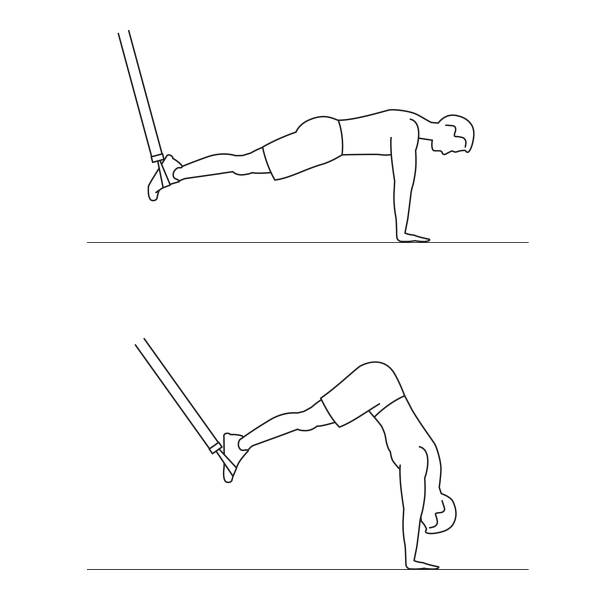Back pain sucks, especially when it prohibits you from performing some of your favorite exercises. Even if you pay special attention to rehabilitative practices and apply a heavy dose of precaution, back pain can still make it difficult to train effectively and do what you really want to do.
With a wrecked back, abdominal work can be especially difficult. Many traditional ab exercises require you to arch your back and put strain on your lumbar. Even healthy backs can take a beating.
While your back is going through its own issues, you’ll still want to strengthen your abs, since a strong core can help protect an injured back. But you’ll want to steer clear of traditional ab movements, such as floor crunches, lying leg raises, and sit ups. You’ll need an alternative approach to stimulating your ab wall that is both effective and safe, and activates all of the important areas of the midsection, including the rectus abdominis, serratus, and oblique muscles.
Stronger Abs for a Safer Back
Abdominal muscle plays a role in nearly every lift you perform, from squats to curls, bench presses to deadlifts, and overhead presses to dips. Without proper strength and development, a weak core will directly translate to a lack of overall strength. Additionally, your abs provide the body’s natural weightlifting belt. By learning to effectively control your core, you will more efficiently transfer power and strength to your limbs to provide more stability to your back, so you can lift more and lift it safely. Think of a strong core as an insurance policy for your back.
One little-known trick is to incorporate ab work into everything you do. On any lift, be conscious of tightening your abs. On standing presses, bench presses, squats, deadlifts, and even curls, contract your abs slightly to stabilize your spine. You’ll not only help protect your lumbar, but will also generate a stable base of power, so those respective areas can be trained more optimally.
Below is a short list of exercises that help develop your core without the strain and pain of too much lumbar flexion. They will challenge and improve your stability, balance, and strength. You’ll also find a few pointers to remember when performing these unique ab moves. Your back will thank you.
7 Movements for Back-Safe Ab Training
Ab Wheel Rollouts
You’ve seen that funny little ab wheel at your gym before, so why not take it for a spin? One requirement is that you have a fairly stable shoulder girdle. Since you’ll need to sustain a strong core and a rather straight upper body posture, the ab wheel rollout looks simple enough, but will test your entire upper body. Oh, and it’ll also kill your abs.
Suspension Trainer Fallouts
Much like the ab wheel rollout, this exercise adds in a unique instability factor. By stabilizing two independent handles suspended from above (as in a TRX trainer) your abs will be doing double duty. Again, the key is to maintain a strong shoulder girdle, along with focusing on targeting your core.
Whole-Body Lifts
As stated above, whole-body lifts (when performed correctly with a tight midsection) will stimulate the abdominal wall through stabilization. When performing squats, standing presses, or deadlifts (among other multi-joint moves), stay conscious of tightening your core as if you were about to be punched. This will not only help your ab development, but also help assist in the actual lift.
Planks
Not just for the trendy people anymore, planks provide that coveted activation of the transverse abdominis. With a similar effect as tightening your core during whole-body lifts, planks have the added benefit of improving stability and balance development with or without a gym. Try timed planks, or have a training partner place a weight plate on your upper back for more of a challenge.
Push Ups
A push up is a plank in motion, and as such is an underrated tool in your ab training arsenal. Many don’t focus enough on body alignment and stability during a set of push ups. They just crank out a set or two at the end of a chest training session without any real thought of whole-body awareness. No matter how tired you may be, make your abs work overtime to keep stability in your spine. Stay straight, avoid sagging, and tighten your core.
Dynamic and Side Planks
As if planks weren’t tough enough, side planks take your no-back-pain ab training to another level. We tend to think of core work only in one plane: the forward flexion of the trunk, whether from the ribcage (as in a crunch), or the pelvis (as in a leg lift). Stability training from all sides of the core is a must for anyone battling back pain. Try transferring from a normal plank position to side planks and continue to alternate for time.
Jackknives and Tucks
Performed with a suspension training device or an exercise ball, jackknives and tucks are killer ab moves without much strain to the lower back. They require serious stability, balance and overall bodyweight strength. Perform jackknives and tucks slowly and with maximum control.

Mix and Match to Blast Your Abs
Of course, you don’t have to perform every single move above. Pick a few of them to add to your daily gym routine, along with relearning how to tighten your core during other lifts. This shift in focus will put you well on your way to a new perspective on ab training, without stressing out your back more than it already is. Don’t let back pain prohibit you from reaping the benefits of ab work. There will always be workarounds—you just have to be a little more attentive, and a whole lot more creative.
Why does ab work bother your lumbar in the first place?






